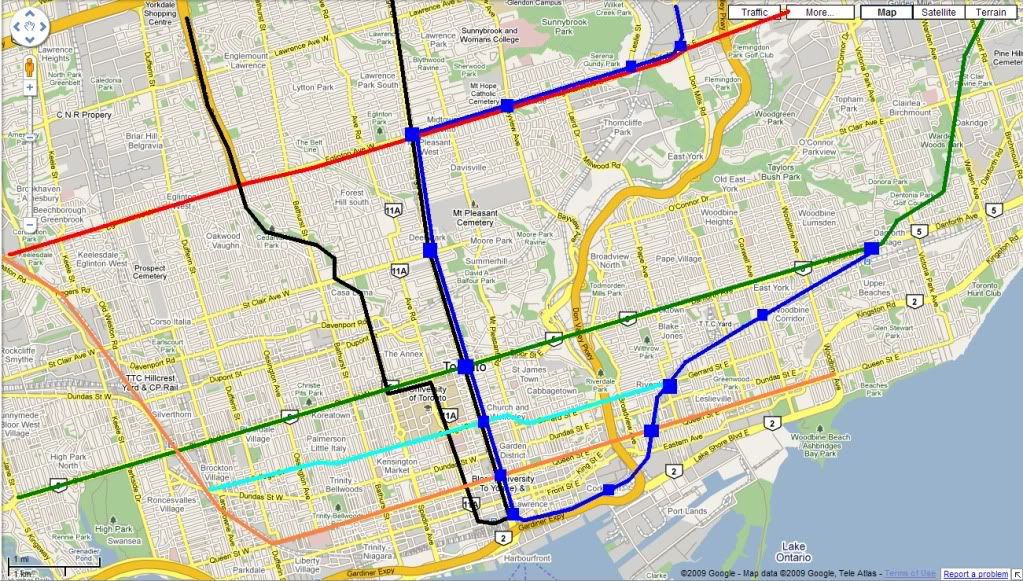CC, if you’re serious about this, I’m fully on board and am willing to contribute any cartographical images you may need to present to the media, politicians or whoever else influential’s interested.

True, although I think more short-turning would even things out on the routes a bit, and the interlining would be more of a convenience for people.
So true. To minimize, costs you could have the line running through Richview be a 2-track configuration whereby both DRL and Eglinton eastbound trains share the same track and the same for westbound trips. The separation of services into two distinctive routes doesn’t have to begin until around Jane Street where the eastbound line could diverge into two branches. This would give all the folk at Scarlett, RY, Islington, Kipling and Martin Grove an equal opportunity to board either service and not be stranded for too long should the undesired train show up first (provided we can achieve up to 40kmph speeds due to wider stop spacings in exclusive ROW).
For sure, though I sort of did the map with the idea of "what would be a good realistic network that could replace transit city without being too much more costly". But yea I even did another version of the map with that exact route for Sheppard, and the DRL going northwest under Weston Rd and meeting up with it.
Jane LRT is actually one of the few aspects of Transit City that I do like and would do more for the densely populated Jane/Finch neighbourhood than the unwarranted Finch West LRT would. I think people at Weston/Sheppard wouldn’t mind transferring onto it, especially if we could get it to be grade-separated at least part of the way and feeding directly into the subway at Mt Dennis.
I wouldn’t be too surprised if TC runs up to $15 billion when they’re through, so yeah, we could do a lot of worthwhile subway projects with that money which at the end of the day generates ridership, urban growth and development and Avenueization just as well as the LRT could and then some. Best part, no road-median transfers in the dead of winter!
Looks good. Pretty funky route downtown though. I think it would slow down the DRL somewhat and make it much more costly just to serve areas where the streetcar wouldn't take that much longer to get to the core. I am a big fan of the DRL-Eglinton combo, though I do live closeby to Dundas West Stn, so im a bit biased by getting my quick route downtown and to the airport...

Thank you. Yeah I thought about that, the funkiness (lol), but those destinations chosen through the downtown are major points of congestion (both for motorists and pedestrians) and where highest yield of passengers get on/off the connecting bus or streetcar service outside of when boarding at the existing subway transfer points. It’d really be worth the marginal extra duration if the subway stops where people actually want to go. Take Chinatown-AGO Stn for instance, notice how a full 510 or 505 quickly empties out by the Spadina-Dundas intersection, and how placing a subway stop in this location would minimize commuter backtracking on the surface network to get to desired major destinations. It’s not an exact science and this spacing/alignment won’t please everyone but it would certainly benefit the vast majority and reduce the time spent on feeder buses/streetcars overall through the downtown.
As I feel that a cross-town subway at the downtown level would be compromised by trying to incorporate it onto the DRL, I deliberately made the alignment for this more V-shaped as not to route too closely to King or Queen Streets for very long. Hopefully in the future, an interlined subway can share ROW in the Wellington aligned segment of the DRL (with bi-level transfers occuring at the centremost stops like at St George Stn) whereby a Queen-King subway can route from Roncesvalles to the Beaches via Liberty Village and West Don Lands.











